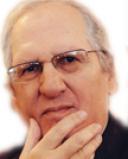Spirituality
Masks of Sanity: The Dark Side of Spirituality (Part Three)
Can religion be detrimental to mental health?
Posted June 22, 2009
In Masks of Sanity (Part Two), I mentioned the strange case of Christopher Coleman. Since then, the Coleman case has gotten far more bizarre. It turns out that the red spray-painted profanities found on the interior of Chris Coleman's home where the triple murders evidently occurred, were much more numerous, vile and vicious than previously indicated. And the content of the threatening letters the Coleman family supposedly received prior to the murders, now made public, is chilling, crude and cryptic. Religiosity and rage are prominent themes. These letters, mechanically printed out and apparently hand-delivered without postmarks to the Coleman family mailbox, seem to be hateful messages from someone absolutely furious with the couple, especially Chris's wife, Teri, her zealous religious beliefs and missionary work. "I have warned you to stop traveling and stop carrying on with this fake religious life of stealing people's money," said one letter. Another insisted that she "deny your God publicly, or else." The author appears to threaten that, unless Teri immediately ceases and desists in her devoutly religious lifestyle, her "worst nightmare" will come to pass. Which is precisely what took place.
What is the forensic significance of these threats? And of the obscene, Manson-esque (see my prior post) epithets scrawled at the horrific murder scene? Who could harbor such murderous hatred for the Coleman family, or more specifically, for Teri Coleman in particular? Clearly, there are two distinct possibilities: Either someone outside the family first sent these nasty letters and then committed the killings. Or Mr. Coleman, as currently charged, cold-bloodedly choked the life out of his own wife and two young children with his bare hands as they slept in their beds. Might the letters have been the defendant's deliberate and devious attempt to blame the premeditated crime on some evil intruder? (Despite leaving the receipt for red spray-paint and other incriminating evidence in the home for police to find.) One of the threatening e-mails received by the family has now been determined to have originated from Chris Coleman's own laptop computer, leading investigators to conclude that he was the likely source of these threats. And a misspelling of the word "opportunity" in one letter was reportedly repeated in other documents Coleman had elsewhere composed.
But, for the forensic psychologist, there are other possibilities to ponder. Given the mounting evidence against the defendant-- including reports that he had told his girlfriend he would be asking for a divorce on the day the murders occurred and would then marry her-- it seems possible that a mental defense may be in the offing. Presenting a successful insanity defense here in California, for example, would probably require unmasking some sort of major mental illness, in addition to detecting and identifying any underlying personality disorder. (See Parts One and Two.) And being able to demonstrate the absence of malingering, i.e., faking or feigning mental illness. What if these e-mails and letters were the defendant's pre-emptive effort to fake a "mental defect," in order to support an insanity defense once the planned executions had been committed? Or could these twisted messages conceivably be evidence of the presence of some legitimate major mental illness such as psychosis, bipolar disorder, or dissociative identity disorder ( multiple personality) in Mr. Coleman? That is, were the threatening messages written by the defendant while under the evil influence of a vicious subpersonality usually disguised beneath a mask of sanity, morality and spirituality? A hateful, homicidal, amoral Mr. Hyde-like alter ego? A chronically dissociated, bitterly resentful shadow side? One which violently rebelled against Coleman's consciously chosen religious morality, temporarily took over, and of which he had no conscious awareness or memory. (Such post-episodic amnesia is not uncommon in severe cases of dissociative identity disorder, psychotic episodes, mania and other "possession" states.) While I have no conclusion one way or another about what happened in Coleman's case, these are some of the considerations that regularly need to be either ruled-out or confirmed during a thorough forensic evaluation of such defendants.
Indeed, a common thread running through this and other violent criminal cases is, oddly enough, religion. The Coleman's, both of whom were heavily involved with the Joyce Meyer Ministries, were an ostensibly strongly Christian couple. Christopher Coleman, a preacher's son, is said to have been raised in a strictly religious home. Evil and religiosity are frequent bedfellows. So are psychosis and religious preoccupation. This can be seen in deranged cult leaders like Jim Jones, David Koresh and Osama Bin Laden. (See my previous posts.) David Berkowitz ("Son of Sam"), born and raised Jewish but now a born-again Christian minister in prison, was fascinated by Satanism and convinced that the constant howling of a neighbor's dog came from demons commanding him to kill. Andrea Yates (see my previous post) was devoutly religious, believing the Devil tormented her, and that the drowning of her five children in a bathtub was spiritually justified to save them from damnation. Melissa Huckaby, charged with cruelly murdering and sexually assaulting five-year-old Sandra Cantu (see my previous post), is a pastor's granddaughter and taught Sunday school at his church. Bruce Jeffrey Pardo, a forty-five-year-old usher at his Southern California church, brutally slaughtered nine people while dressed up in a Santa Claus suit on Christmas eve of 2008. (See my previous post.) Can religion (which commonly includes belief in the Devil) create or contribute to such diabolical behaviors? Is there any link between religiosity and dangerous states of mind leading to evil deeds? Can religion or spirituality be used to mask madness? What is the relationship between religiosity, violence and evil? Does spirituality have a dark side?
Freud was cynical about religion in general, viewing it as a form of neurosis that tends to infantilize the faithful, permitting them to escape reality and slough off their personal responsibility onto some controlling parental power outside themselves. Jung, whose father was a pastor, was more sympathetic, feeling that humanity needs the meaningful myths of religion and spirituality to sustain mental health. Psychoanalyst Otto Rank came to a similar conclusion. Rollo May, a Congregational minister before becoming a psychologist, felt that literal religious belief in the devil was psychologically dangerous, evasively projecting and externalizing our own potentiality for and participation in the process of evil. Which is true? Does spirituality support mental health, as some recent studies suggest? Or does religiosity cause, exacerbate or mask mental disorders? Or might both be true?
Psychologically speaking, one positive contribution of religion or spirituality is that it is a way of finding meaning in a seemingly meaningless world. Religion offers people something to believe in. Faith, in this sense, can move mountains, since meaning, as both Jung and existential psychiatrist Viktor Frankl pointed out, makes almost any suffering endurable. Religion also serves the purpose of keeping the ego in perspective: We are not in control of all that happens, nor are we responsible for it. There are greater spiritual forces at work that, though invisible or unseen, are no less real, palpable and powerfully influential in our lives. Religion and spiritual community is also an antidote to the alienating and anxiety-provoking effects of existential isolation. And, perhaps most importantly, religion provides a means of making sense of death, tragedy and evil.
But religion can be detrimental to mental health, especially when it rigidly and dogmatically engenders rejection and repression of one's basic, primal, instinctual humanity--especially sexuality, anger and rage. In such instances, all that is deemed unacceptable, sinful or evil in human nature is denied and dissociated, forming an unconscious complex (see my previous post) or compartmentalized "splinter personality" comprised of these unspiritual or "irreligious" contents. Psychiatrist C.G. Jung called this rejected, despised and denigrated part of ourselves the shadow. Religiosity can be worn like a mask to conceal the "shadow" or disguise the "daimonic." Rollo May (1969) defined the daimonic as "any natural function that has the power to take over the whole person." He cites both sexuality and anger or rage as examples of the daimonic, which, by its very nature, can be both destructive and creative. When religious or spiritual beliefs lead to a condemnation, denial, dissociation and chronic repression of eros, sex, anger, rage and other primal passions, impulses, attitudes or emotions, the daimonic becomes even more powerful and destructive, manifesting in dangerous states of mind and, sometimes, evil deeds.
It is a true paradox. When daimonic impulses, feelings or fantasies are dissociated from consciousness due to their incompatibility with rigid religious principles, when we try to be too good, too spiritual, we unwittingly make ourselves more susceptible to the dark, destructive side of the daimonic, or what theologians traditionally refer to as the demonic. From a psychological perspective, the demonic is not supernatural, metaphysical or satanic. The demonic is rather what happens to the daimonic when it is consistently mismanaged, denied, dissociated, repressed and excommunicated from consciousness. In the unconscious, it turns negative, disintegrative, even violent, accruing the power to temporarily possess or usurp the whole personality. Much like the depraved Mr. Hyde possesses Dr. Jekyll. Could this have been Chris Coleman's state of mind at the time of allegedly committing these heinous crimes? And, if so, did that dissociative state render him unable to distinguish between good and evil or to understand the nature and quality of his actions? And, therefore, not legally responsible for his actions? These are questions his defense team will possibly be further exploring.


